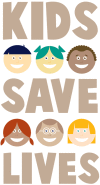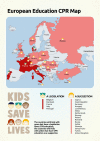"Kids Save Lives": Educating Schoolchildren in Cardiopulmonary Resuscitation Is a Civic Duty That Needs Support for Implementation
- PMID: 28292747
- PMCID: PMC5524048
- DOI: 10.1161/JAHA.117.005738
"Kids Save Lives": Educating Schoolchildren in Cardiopulmonary Resuscitation Is a Civic Duty That Needs Support for Implementation
Keywords: Editorials; KIDS SAVE LIVES; bystander cardiopulmonary resuscitation; cardiac arrest; cardiopulmonary resuscitation; schoolchildren education in cardiopulmonary resuscitation.
Figures


References
-
- Taniguchi D, Baernstein A, Nichol G. Cardiac arrest: a public health perspective. Emerg Med Clin North Am. 2012;30:1–12. - PubMed
-
- Mozaffarian D, Benjamin EJ, Go AS, Arnett DK, Blaha MJ, Cushman M, Das SR, de Ferranti S, Després JP, Fullerton HJ, Howard VJ, Huffman MD, Isasi CR, Jiménez MC, Judd SE, Kissela BM, Lichtman JH, Lisabeth LD, Liu S, Mackey RH, Magid DJ, McGuire DK, Mohler ER III, Moy CS, Muntner P, Mussolino ME, Nasir K, Neumar RW, Nichol G, Palaniappan L, Pandey DK, Reeves MJ, Rodriguez CJ, Rosamond W, Sorlie PD, Stein J, Towfighi A, Turan TN, Virani SS, Woo D, Yeh RW, Turner MB; American Heart Association Statistics Committee; Stroke Statistics Subcommittee . Executive summary: heart disease and stroke statistics—2016 update: a report from the American Heart Association. Circulation. 2016;133:447–454. - PubMed
-
- Strategies to Improve Cardiac Arrest Survival. Available at: http://www.nap.edu/catalog/21723/strategies-to-improve-cardiac-arrest-su.... Accessed February 12, 2017.
-
- Böttiger BW. “A Time to Act”—Anaesthesiologists in resuscitation help save 200,000 lives per year worldwide: school children, lay resuscitation, telephone‐CPR, IOM and more. Eur J Anaesthesiol. 2015;32:825–827. - PubMed
Publication types
MeSH terms
LinkOut - more resources
Full Text Sources
Other Literature Sources
Medical

